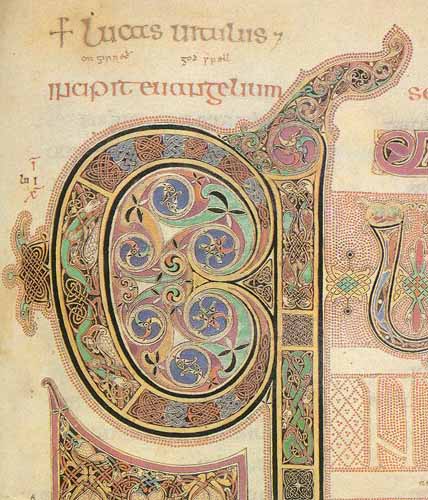In Chapter Seven Anderson does his best to balance the
scales of how early Jews including rabbinic ones view their God, by stressing
that there is plenty of evidence of God being viewed as gracious and
merciful, finding ways to not act as
simply an accountant of sin debt. Anderson is of course
right about this, whether talking about the Hebrew Scriptures themselves or
talking about other early Jewish literature, including the Mishnah. He then, equally correctly, points out how
resources like Strack and Billerbeck led many NT scholars astray because of
their biased presentation of early Judaism when it came to the Law vs. grace,
or faith vs. works, tandems. This of
course is by now old news, and he
acknowledges the groundbreaking work of E.P. Sanders on this point.
In Chapter Eight he turns however
to Jesus and the early Christian tradition when it comes to sin and atonement
and related matters. Besides pointing
again to the ‘forgive us or debts’ petition in the Lord’s prayer, and then turns to Lk. 7.36-50 and
especially the little parable about the creditor and the two debtors. But here we run into a problem. Following the
reading of the story by Ephrem of Syria the conclusion is drawn that “the one
who invited Jesus to the great meal was rebuked because of the meagerness of
his love. But that woman wiped away with her tears the great bond that had
accrued to her sins” (p. 113). Anderson adds that the
woman ‘showed her moral virtuosity’ by
her act on behalf of Jesus, washing his feet with her tears and then anointing them. This is problematic because in fact this is
not what this story says or means.
Jesus’ point is that the woman loves Jesus more than Simon precisely
because she has already been forgiven more, and as an act of gratitude is
responding. Yes, Jesus does indeed use a commercial metaphor to compare the debt of
two sinners (in this case the woman and Simon). No, we certainly do not have here a theology
of a good deed canceling someone’s sin debt. Ephrem was wrong.
Turning next to Col. 2.14 Anderson
(p. 114) discusses the notion of the ‘canceling of the debt of all our trespasses, and the erasure
of the bond of indebtedness’. This is
certainly an important verse for understanding early Christian ideas about the atonement.
Anderson argues
that what is being referred to here is a legal document which someone signs
recognizing their debt, and promising to repay a debt. Now the Greek, cheirograph simply means a hand written document. In itself it does
not specify what sort of document. But the context here seems pretty clear that
Anderson is
basically on the right track. I have
said in my Eerdmans commentary on Philemon, Colossians, and Ephesians that we
are being told that Jesus canceled the IOU ( a record of debts owed, written in
the hand of the debtor cf. Philemon vs. 19 and Test. Job 11.11) which stood
against believers. The reference is to the heavenly book of deeds in which a
record of one’s wrong doings is kept
(cf. Apoc. of Zephan. 3.6-9; 7.1-8; Apoc. of Paul 17 and Rev. 5.1-5;
20.12). God has removed or erased the
entry in the ledger of the sin debt. But
the image goes further suggesting that the titulus on the cross under which
Christ hung, was this record of debt. Jesus was crucified for our sin debts (cf.
Ps. 69.28; 1 Enoch 108.3; Rev. 3.5 on erasing an entry in such a ledger). Of course in Revelation we are even told that
a believer who commits apostasy can have his very name erased from the heavenly
book of everlasting life. In short,
Jesus paid all the sin debt on the cross, erasing the entries in the heavenly
ledger. The term cheirograph does not recur
elsewhere in the NT but it is found in Tobit, however there it has a different
sense— that of a receipt (1.14; 5.3.
9.2). It is quite irrelevant that some
later Jewish editor of Tobit turned a receipt on deposit into a loan document. This has no bearing on NT discussions of sin and
debt, and how much influence it had on early Christian discussions (e.g.
Jerome) is debatable.
Anderson goes on to compare what is said in
Colossians with what Paul says in Romans (e.g. Rom. 5.12-21) where Adam is
blamed for getting his race into sin debt. Paul depicts our sinful state as a
sort of slavery. The term redemption of course means literally the buying of
someone out of slavery, repaying the debt owed by and even for the slave. Original sin is the means by which the human
race fell into this slavery of sin debt, a debt we never could repay. Anderson
then, with the help of a Syriac Father named Jacob of Serug, then asks the next
logical question namely, namely who holds the bond on us. Jacob’s answer is
Satan. Thus Christ’s death is seen as
paying Satan to get us out of sin debt.
The problem with this whole way of
envisioning things is three fold: 1) God owes nothing to Satan; 2) God’s Son
owes nothing to Satan; 3) what Adam and Eve ‘owed’ in the garden was obedience
to God, and when they disobeyed thereafter owed God for their transgressions. Satan
does not hold the mortgage on the human race.
While I agree with Anderson
that the Syriac Fathers have been neglected, nevertheless he is right to say “although
it would be an exaggeration to say that these Syriac writers retained the
original sense of early Christian ideas, they do provide a check on the common
tendency of scholars to assimilate them into Greco-Roman counterparts.” (p.
121). Anderson, in the end is interested
in the broader Christian tradition and its ways of imaging and conceiving of,
and dealing with sin, and he is right
indeed that various conceptions about sin, including many modern Christian
ones, derive from the history of Christian tradition rather than from the Bible
primarily, or in some case rather than from the Bible at all. Anderson
is correct that the Creeds do not really outline a theology of atonement. The Bible however does…. and so one must go ‘ad
fontes’ to the font, to derive such a theology. More on this in our next post on this
stimulating book.
For now I leave you with a quote
from Robert Jenson (Systematic Theo. Vol. One, 1997), p. 187: “It is one
of the more remarkable and remarked on aspects of theological history that no
theory of the atonement has ever been universally accepted. By now this
phenomenon is itself among the things that a proposed theory of atonement must
explain.”

